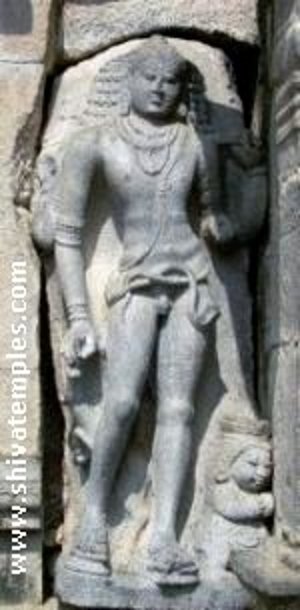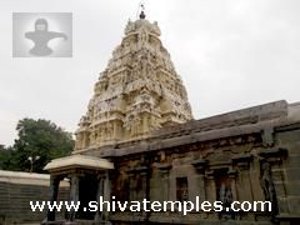Vadugurnathar Temple, Vadugur
Location: Vadugur (Now known as Tiruvandarkoil)
Deity known as: Panchanatheeswarar, Vadugurnathar, Vadukeeswarar
Female Deity: Vaduvagirkkanniammai, Tripurasundari
Pathikam: Sambandar - 1
Gallery - Vadugurnathar Temple
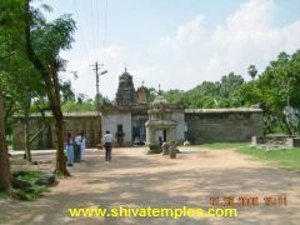
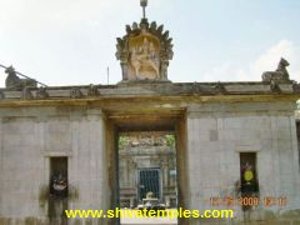
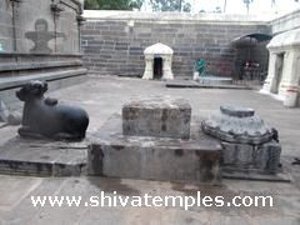
How to Reach
This Shiva temple is located at Tiruvandarkovil, about 21 km east of Villupuram on the Villupuram–Villianur–Puducherry National Highway (NH45A). Puducherry lies approximately 20 km further east.
Temple Address
Arulmighu Vadugurnathar TempleTiruvandarkoil
Tiruvandarkoil Post
Via Kandamangalam
Puducherry State
PIN 605102
Temple Layout
Temple Structure and Main Sanctum
This Shiva temple is maintained by the Archaeological Survey of India (ASI). It is enclosed within impressive compound walls and has an east-facing entrance. The temple does not feature a gopuram. A Nandi can be seen outside the entrance, while inside are the Dwajasthambam, Balipeetam, and another Nandi. An 18-pillared mandapam within the premises houses the south-facing sanctum of the goddess Vaduvakirkanni. Beyond this mandapam lies another hall known as the Artha Mandapam, whose entrance is flanked by beautifully sculpted Dwarapalakas, showcasing the exquisite craftsmanship of the period.
Inner Prakaram and Deities
The sanctum of the presiding deity, Sri Panchanatheeswarar — a self-manifested (Swayambhoo) Lingam — is located next to the Artha Mandapam. In the southern side of the prakaram surrounding the sanctum, there is a separate sannidhi with a vimanam dedicated to the four Nayanmars. The prakaram also houses shrines for Bikshadanar (south-facing), Dakshinamurthy, Lingothbhavar (west-facing), Durga (north-facing), and Arthanareeshwarar. In the south-west corner of the prakaram are the shrines of Vinayaka and Arumukha with His consorts Valli and Deivanai.
Muruga and Tirupugazh
The Tiruppugazh collection includes one hymn composed in praise of Lord Muruga at this temple. In this temple, Lord Muruga is depicted with six divine faces and twelve hands, seated majestically upon His peacock vehicle, accompanied by His consorts Valli and Deivanai.
Historical Inscriptions
The vimanam above the primary sanctum closely resembles the one found at the renowned Tanjore Big Temple. The outer walls surrounding the Artha Mandapam and the sanctum are adorned with numerous inscriptions that offer valuable insights into the temple’s antiquity. These inscriptions trace the temple’s origins to the period of Paranthaka Chozha I and include later records from the reigns of Raja Raja Chozha I, Rajendra Chozha I, and Kulothunga Chozha I, further underscoring the temple’s historical and architectural significance.
Mysterious Sculptures
As we take a leisurely walk along the outer prakaram, on the western side, a sculpture depicting a turtle and a fish can be seen on the wall. The symbolic significance of these carvings, however, remains unknown.

Sculpture of a Turtle and Fish
Temple Significance
The Legend of Vaduka Bairavar
Mundasuran, having gained invincibility through divine boons, began to torment Brahma and the Devas without restraint. Distressed by his tyranny, they sought the grace of Shiva for deliverance. Responding to their plea, Shiva commanded Vaduka Bairavar, one of the eight Bairavars, to destroy the demon and restore peace. After slaying Mundasuran, Vaduka Bairavar sought absolution for the Brahmahathi Dosham—the sin of taking a life—by worshipping Shiva at this very place. Pleased with his devotion and penance, Shiva manifested here as Sri Vadukeeswarar. Hence, the place came to be known as Vadukur or Andar Koil, which in time evolved into the present name Tiruvandarkoil.
See also Kodunkundranathar temple, Tirukodunkundram about Vaduga Bhairavar.
Temple Timings and Special Rituals
The temple is open for worship from 7:00 a.m. to 10:00 a.m. and 6:00 p.m. to 8:00 p.m. Pujas are performed twice daily, with special rituals dedicated to Sri Bhairava on Karthigai Ashtami. Devotees also perform abhishekam to Bhairava every Sunday. The Chithirai festival is observed as a one-day celebration at this temple.
Sambandar's Pathikam
The Pathikam composed by Thirugnana Sambandar in praise of this deity is featured in the First Thirumurai of the Thevaram hymns.
More Gallery

